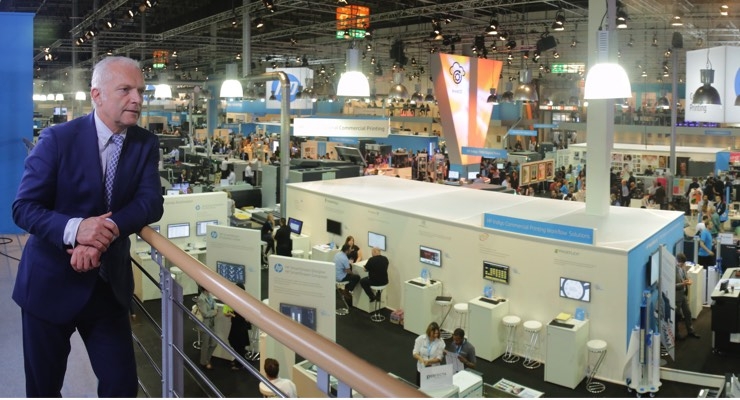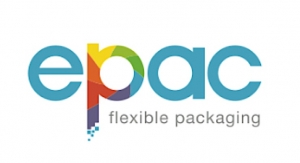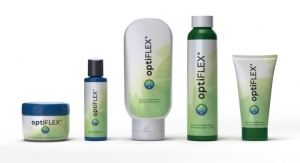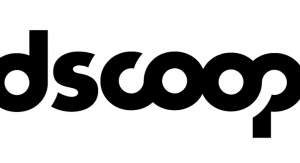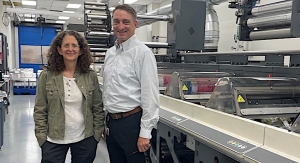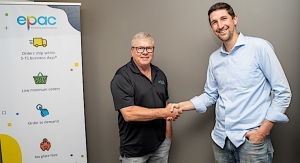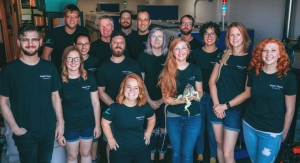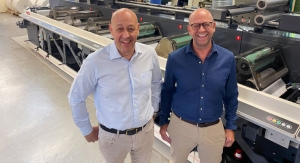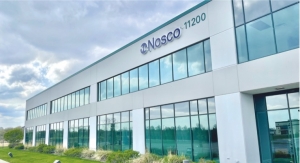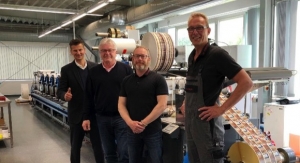10.14.16
The printing industry is clearly evolving, and it is interesting to hear the perspective of people who have long been involved in the field. L&NW recently spoke with Francois Martin, worldwide marketing head, HP Graphics Solutions Business, HP Inc., about the gains being made by HP the field of digital printing and packaging. He also discusses the importance of ink in the printing process, adding that ink is not a commodity.
L&NW: What are the segments - labels, packaging, etc - that HP is having the most success in?
Francois Martin: Packaging is comprised of four main segments: labels, flexible packaging, folding carton and corrugated.
HP digital printing technologies enable us to address all four segments successfully. We initially engaged the label market using HP Indigo technology. Over the last 10 years, the label market has adopted digital printing, and now HP Indigo is the standard and preferred technology, delivering outstanding print quality on a wide range of substrates – even for long runs, as demonstrated with the HP Indigo 8000 Digital Press.
For flexible packaging and folding carton segments, adoption of the HP Indigo 20000 and 30000 Digital Presses is in an acceleration phase. The market is discovering what can be done using HP Indigo technologies, and we have industry-leading print service providers (PSPs) adopting this technology to complement their flexo and offset environments. With HP Indigo technology, PSPs can run jobs more efficiently and meet strict brand requirements. The flexible packaging and folding carton segments will follow the same pattern as labels, and in the coming years digital printing will become mainstream, as the demand for faster time to market, security features and the number of versions/SKUs grows.
We are living in a world where products need to be unique, and only digital printing efficiently enables customization. For the corrugated segment, demand for digital solutions is ramping. HP PageWide Technology is addressing demand for both digital pre-print with the HP PageWide Web Press T400S and 1100S and post-print with the HP PageWide C500 Press. The demand for short runs in corrugated is as strong as it was for labels 10 years ago. Soon digital printing will be the obvious answer to PSPs’ and brands’ needs.
L&NW: How does HP develop the inks that it uses for its various presses?
FM: HP relies on two types of inks: HP Indigo ElectroInks and HP Thermal Inks. HP develops both ink sets in house, from the ink itself to the writing elements as well as the software/algorithms to optimize the print quality.
HP Indigo ElectroInk has set an industry standard for high print quality on a wide range of substrates. HP Thermal Inkjet, a water-based ink, delivers high quality at very high speeds up to 30,600 m2/hour or 330,000 ft2/hour for corrugated applications.
Ink development is very important, and too many people consider ink a commodity. Ink is part of the consumables, and ink innovation is critical to the entire printing process as well as the end results. Putting ink on paper is more complex than it sounds. It’s not enough for each component to work properly. They must all work properly together at high speeds in a production environment.
L&NW: What are the key differences between the inks that are used in, say, labels, from those for flexible packaging and other segments?
FM: HP Indigo ElectroInks are used across labels, flexible packaging and folding carton applications. The inks are CMYK plus special colors, spot colors and white. The newly released HP ElectroInk Premium White provides the highest range of opacities (up to silk-like) with a single process, enabling converters to expand their application range and reduce costs and turnaround times; 97 percent of the Pantone colors can be obtained by mixing them.
HP has developed special color management capabilities with an embedded spectrophotometer, which enables any given job to be reproduced weeks after weeks on different presses across different sites the exact same way. Color consistency is a huge competitive differentiator and a key reason why brands love HP Indigo.
For corrugated printing, we use a water-based pigmented ink with user-replaceable printheads that are designed for an industrial environment. The inks come in large barrels with service stations. The ink layers are applied using advanced nozzle redundancy technology and HP High Definition Nozzle Architecture (HDNA) technology to deliver the highest print quality at very high speed.
L&NW: Is HP manufacturing some of its inks, and how important is it that customers use the HP inks?
FM: HP manufactures all its inks and related components at automated manufacturing sites across the globe. We can guarantee that all the inks deliver the performance required for an industrial environment. HP is continually innovating with its ink technology, and HP digital presses benefit from the latest development in opacity, scratch resistance and thermal resistance. HP has been manufacturing ink since 1984 with the introduction of the first HP Thermal Inkjet printer, ThinkJet. HP has more than 30 years of proven experience and continues to invest in both Thermal Inkjet and HP Indigo ElectroInks.
L&NW: From a printing perspective, how did drupa go for HP, and how has the follow-up in term of customer orders been since the show ended?
FM: HP’s success at drupa exceeded our expectations. HP closed 50 percent more sales than projected. There was more interest from PSPs for HP digital printing solutions than ever. Most importantly, HP was the most visited hall, which demonstrates that the industry is being reinvented. A few drupas ago, Heidelberg was the industry standard. Today, HP is the new standard. Now we are manufacturing and installing the presses we sold. Most of the products we demonstrated at drupa are commercially available with proven performances. We spent time developing end-to-end solutions with leading industry partners. At drupa HP announced that it wanted to help PSPs reinvent their possibilities, and that’s what they are doing in partnership with HP.
L&NW: Is there anything else that you would like to add?
FM: The graphics industry is where printing is happening. This industry had stability for decades, and it is now rapidly transforming. HP digital printing technologies are enabling new application possibilities. It is important for PSPs to work with the right partner who will be in business for many years to come with proven technologies and a strong commitment to the graphics industry. It’s very important for PSPs to adopt a solution that works and that can grow with their businesses to address changing market conditions.
L&NW: What are the segments - labels, packaging, etc - that HP is having the most success in?
Francois Martin: Packaging is comprised of four main segments: labels, flexible packaging, folding carton and corrugated.
HP digital printing technologies enable us to address all four segments successfully. We initially engaged the label market using HP Indigo technology. Over the last 10 years, the label market has adopted digital printing, and now HP Indigo is the standard and preferred technology, delivering outstanding print quality on a wide range of substrates – even for long runs, as demonstrated with the HP Indigo 8000 Digital Press.
For flexible packaging and folding carton segments, adoption of the HP Indigo 20000 and 30000 Digital Presses is in an acceleration phase. The market is discovering what can be done using HP Indigo technologies, and we have industry-leading print service providers (PSPs) adopting this technology to complement their flexo and offset environments. With HP Indigo technology, PSPs can run jobs more efficiently and meet strict brand requirements. The flexible packaging and folding carton segments will follow the same pattern as labels, and in the coming years digital printing will become mainstream, as the demand for faster time to market, security features and the number of versions/SKUs grows.
We are living in a world where products need to be unique, and only digital printing efficiently enables customization. For the corrugated segment, demand for digital solutions is ramping. HP PageWide Technology is addressing demand for both digital pre-print with the HP PageWide Web Press T400S and 1100S and post-print with the HP PageWide C500 Press. The demand for short runs in corrugated is as strong as it was for labels 10 years ago. Soon digital printing will be the obvious answer to PSPs’ and brands’ needs.
L&NW: How does HP develop the inks that it uses for its various presses?
FM: HP relies on two types of inks: HP Indigo ElectroInks and HP Thermal Inks. HP develops both ink sets in house, from the ink itself to the writing elements as well as the software/algorithms to optimize the print quality.
HP Indigo ElectroInk has set an industry standard for high print quality on a wide range of substrates. HP Thermal Inkjet, a water-based ink, delivers high quality at very high speeds up to 30,600 m2/hour or 330,000 ft2/hour for corrugated applications.
Ink development is very important, and too many people consider ink a commodity. Ink is part of the consumables, and ink innovation is critical to the entire printing process as well as the end results. Putting ink on paper is more complex than it sounds. It’s not enough for each component to work properly. They must all work properly together at high speeds in a production environment.
L&NW: What are the key differences between the inks that are used in, say, labels, from those for flexible packaging and other segments?
FM: HP Indigo ElectroInks are used across labels, flexible packaging and folding carton applications. The inks are CMYK plus special colors, spot colors and white. The newly released HP ElectroInk Premium White provides the highest range of opacities (up to silk-like) with a single process, enabling converters to expand their application range and reduce costs and turnaround times; 97 percent of the Pantone colors can be obtained by mixing them.
HP has developed special color management capabilities with an embedded spectrophotometer, which enables any given job to be reproduced weeks after weeks on different presses across different sites the exact same way. Color consistency is a huge competitive differentiator and a key reason why brands love HP Indigo.
For corrugated printing, we use a water-based pigmented ink with user-replaceable printheads that are designed for an industrial environment. The inks come in large barrels with service stations. The ink layers are applied using advanced nozzle redundancy technology and HP High Definition Nozzle Architecture (HDNA) technology to deliver the highest print quality at very high speed.
L&NW: Is HP manufacturing some of its inks, and how important is it that customers use the HP inks?
FM: HP manufactures all its inks and related components at automated manufacturing sites across the globe. We can guarantee that all the inks deliver the performance required for an industrial environment. HP is continually innovating with its ink technology, and HP digital presses benefit from the latest development in opacity, scratch resistance and thermal resistance. HP has been manufacturing ink since 1984 with the introduction of the first HP Thermal Inkjet printer, ThinkJet. HP has more than 30 years of proven experience and continues to invest in both Thermal Inkjet and HP Indigo ElectroInks.
L&NW: From a printing perspective, how did drupa go for HP, and how has the follow-up in term of customer orders been since the show ended?
FM: HP’s success at drupa exceeded our expectations. HP closed 50 percent more sales than projected. There was more interest from PSPs for HP digital printing solutions than ever. Most importantly, HP was the most visited hall, which demonstrates that the industry is being reinvented. A few drupas ago, Heidelberg was the industry standard. Today, HP is the new standard. Now we are manufacturing and installing the presses we sold. Most of the products we demonstrated at drupa are commercially available with proven performances. We spent time developing end-to-end solutions with leading industry partners. At drupa HP announced that it wanted to help PSPs reinvent their possibilities, and that’s what they are doing in partnership with HP.
L&NW: Is there anything else that you would like to add?
FM: The graphics industry is where printing is happening. This industry had stability for decades, and it is now rapidly transforming. HP digital printing technologies are enabling new application possibilities. It is important for PSPs to work with the right partner who will be in business for many years to come with proven technologies and a strong commitment to the graphics industry. It’s very important for PSPs to adopt a solution that works and that can grow with their businesses to address changing market conditions.

